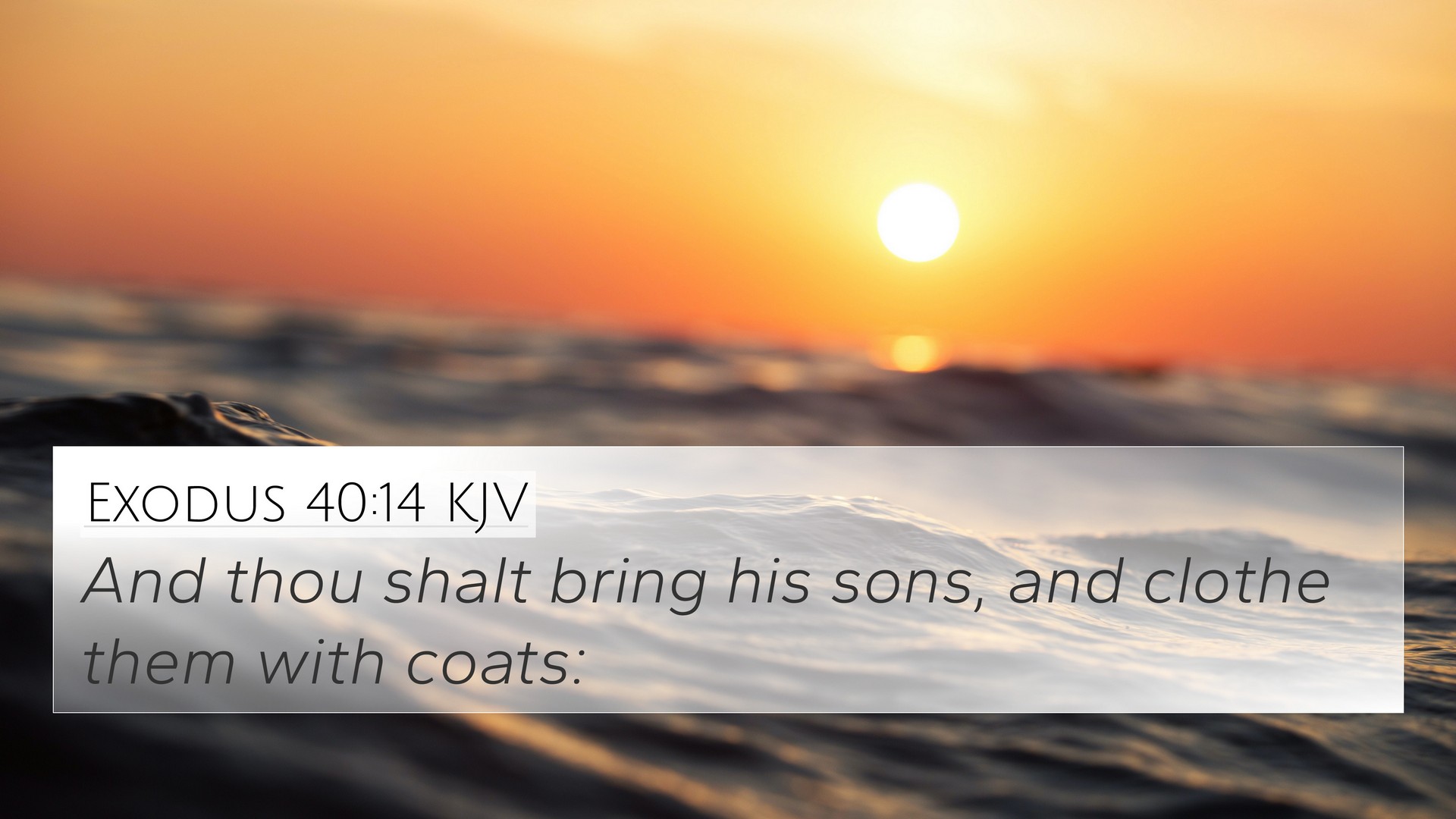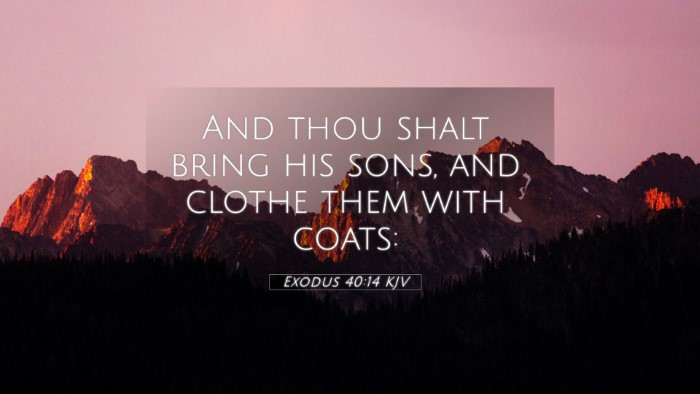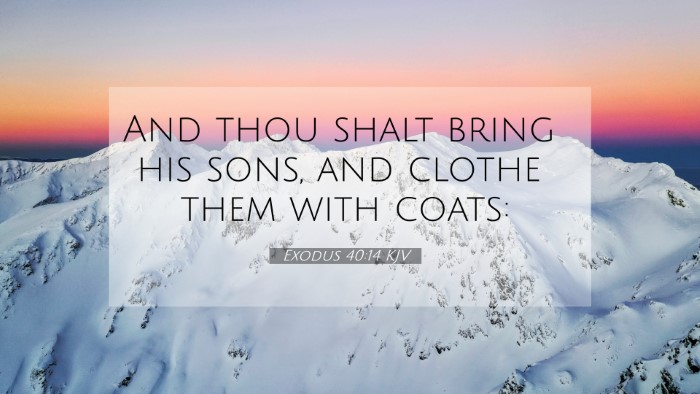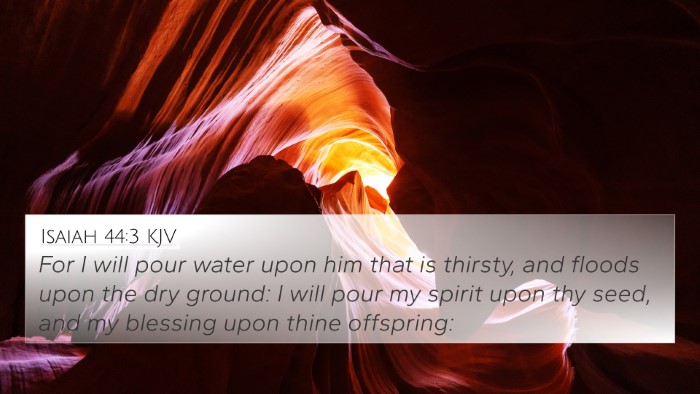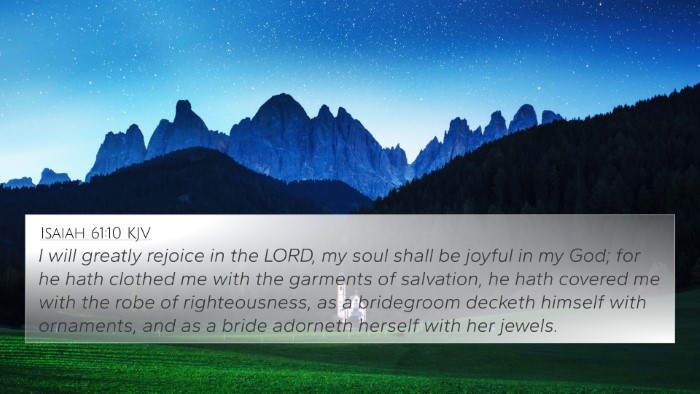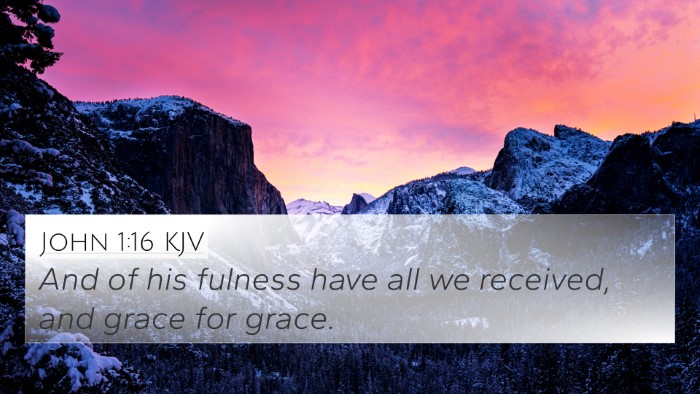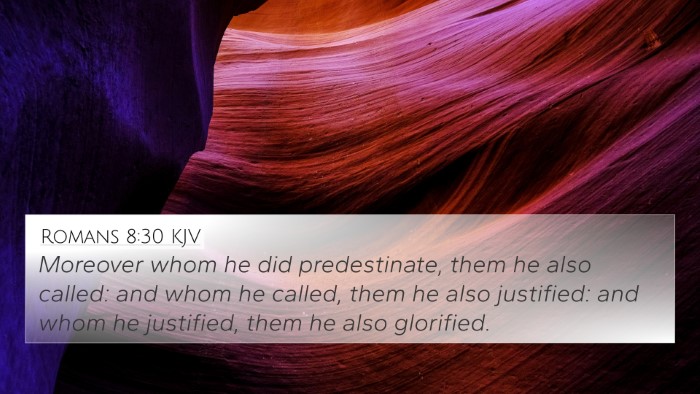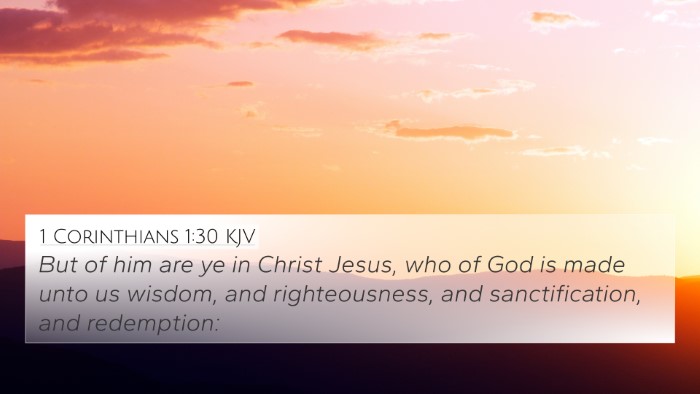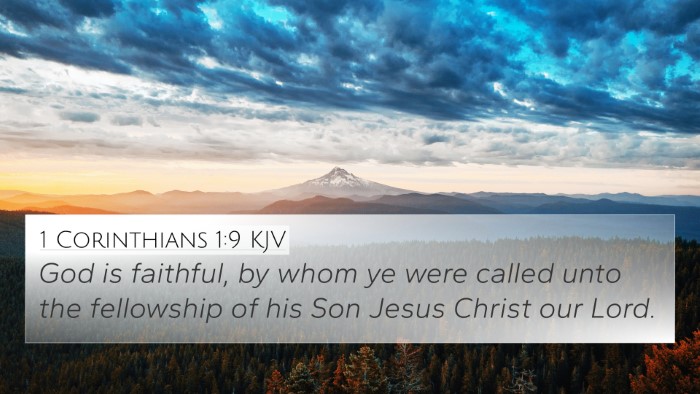Understanding Exodus 40:14
Verse: Exodus 40:14 states: "And thou shalt bring his sons, and clothe them with coats." This verse is part of the instructions given to Moses concerning the consecration of Aaron and his sons as priests.
Summary of Meaning
The significance of Exodus 40:14 lies in the appointment and ordination of the priests. This appointed task signifies a transition from common service to a sacred duty as mediators between God and the people of Israel.
Commentary Insights
- Matthew Henry: He notes that this act of dressing Aaron's sons in coats represents their new role and identity as priests. The coats symbolize the dignity and responsibility of their calling, emphasizing the sanctity of their position.
- Albert Barnes: Barnes highlights the importance of clothing in the context of priestly duties. The garments serve as a visible sign of their consecration and the roles they are about to assume in mediating the relationship between the Israelites and God.
- Adam Clarke: Clarke elaborates on the symbolism inherent in priestly garments, suggesting that the attire is not only for honor but is also a reminder of the holiness expected of those in service to God. He stresses the necessity of proper preparation in worship and service to God.
Bible Verses Related to Exodus 40:14
Here are some key Bible verse cross-references related to Exodus 40:14:
- Exodus 28:2: This verse outlines the garments to be made for Aaron, signifying his position as the High Priest.
- Exodus 29:9: Discusses the ordination of priests highlighting that they are set apart for a holy purpose.
- Leviticus 8:30: Describes the anointing of Aaron and his sons, connecting them to their priestly responsibilities.
- Numbers 3:10: States that the Levites are to be given to Aaron to assist him in the duties of the priesthood.
- Psalm 110:4: Refers to the eternal priesthood, pointing to the significance of Aaron's priestly lineage.
- Hebrews 7:11-17: Discusses the Levitical priesthood's transition and its fulfillment in Christ, drawing a parallel to the priesthood established in Exodus.
- 1 Peter 2:9: Relates to the concept of believers being a royal priesthood, emphasizing the continuity of the priestly call.
- Revelation 1:6: Refers to believers being made priests unto God, echoing themes of service established in Exodus.
Using Cross-References for Deeper Understanding
Engaging in comparative Bible verse analysis is a valuable tool for understanding complex themes in scripture. The connections between Bible verses such as those mentioned above help you grasp the cohesion of biblical narratives and their implications for spiritual life today.
How to Utilize Cross-Referencing Tools
Consider the following methods for effective cross-referencing:
- Bible Concordance: Use a concordance to find occurrences of words related to themes of priesthood and service.
- Bible Cross-Reference Guide: Look up guides that highlight parallels across the Old Testament and New Testament.
- Bible Reference Resources: Utilize study Bibles that provide cross-references in the margins.
- Bible Chain References: Follow thematic chains connecting verses that discuss holiness and service.
Engagement with Scripture
When studying passages like Exodus 40:14, ask questions such as:
- What verses are related to the priestly duties exemplified here?
- How do Paul's references to priesthood relate to the instructions given in Exodus?
- What thematic connections can I draw from the Old Testament prophetic writings to the New Testament teachings?
Conclusion
The instructions outlined in Exodus 40:14 signify not just a ritual of clothing but a profound theological truth about service, holiness, and the continuation of God's covenant through established leadership. Utilizing cross-referencing techniques greatly enhances our comprehension of how God’s message unfolds through the scriptures.
